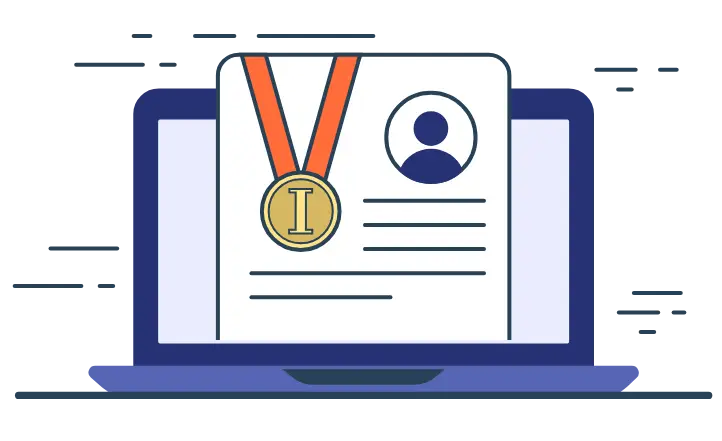TL;DR
- Applicant Tracking System (ATS) automates and streamlines recruitment processes, reducing time and costs.
- Key ATS features include automated CV parsing, AI-powered candidate matching, multi-job board posting, and customisable workflow automation.
- Additional benefits include interview scheduling, candidate relationship management, reporting & analytics, and robust compliance with data security regulations.
- ATS centralises candidate data, facilitates better hiring decisions, and improves recruiter efficiency.
In today’s competitive job market, companies receive hundreds, if not thousands, of applications for a single job vacancy. Sorting through these applications manually can be time-consuming and inefficient. This is where an Applicant Tracking System (ATS) comes into play. An ATS is an advanced recruitment software designed to streamline and automate the hiring process, making it easier for recruiters to find the right candidates quickly.
What is an Applicant Tracking System(ATS)?
An Applicant Tracking System (ATS) is a software solution that helps recruiters and hiring managers manage job applications efficiently. It automates various stages of the hiring process, including job posting, CV screening, candidate tracking, and interview scheduling. With an ATS, organisations can save time, reduce hiring costs, and improve the overall quality of hires.
The applicant tracking system collects and stores a resume in a database for hiring professionals to access. It narrows down the applications by using keywords, and then the selected resumes get transferred from one part of the system to another.
Which Features Should You Look for in an Applicant Tracking System?
When choosing an Applicant Tracking System (ATS), it’s essential to select one with the right and best features of ATS to streamline your hiring process and improve efficiency. Here are the key features to consider:
1. Automated CV Parsing & Screening
One of the most essential features of an applicant tracking system is its ability to parse and screen CVs automatically. This feature extracts key details such as a candidate’s work experience, skills, and education, eliminating the need for manual data entry. The ATS then ranks candidates based on their relevance to the job description, ensuring that only the most qualified individuals move forward in the hiring process.
2. AI-Powered Candidate Matching
Advanced Artificial Intelligence (AI) enable the ATS to match job descriptions with suitable candidates based on skills, qualifications, and past experience. This feature reduces human bias and enhances decision-making, allowing recruiters to focus on top-tier applicants while improving overall hiring efficiency.
3. Multi-Job Board Posting
A robust ATS allows recruiters to post job vacancies on multiple job boards, career sites, and social media platforms with a single click. This ensures wider job visibility and attracts a diverse pool of applicants, saving recruiters time and effort in manual posting.
4. Customisable Workflow Automation
Each organisation has a unique hiring process, and an applicant tracking system(ATS) should be flexible enough to adapt to different workflows. Customisable automation enables recruiters to streamline repetitive tasks such as sending interview invitations, tracking applicant progress, and updating hiring statuses. This feature helps maintain consistency and efficiency in recruitment.
5. Interview Scheduling & Video Interviews
An ATS with integrated interview scheduling tools allows recruiters to set up interviews without the hassle of back-and-forth emails. The system can send automated reminders, integrate with calendars, and even facilitate video interviews, providing a seamless experience for both candidates and hiring managers.
7. Candidate Relationship Management (CRM)
A strong Candidate Relationship Management (CRM) system within an ATS helps recruiters build and maintain a talent pipeline. It stores and organises candidate data, allowing businesses to re-engage past applicants for future job openings. This feature is particularly beneficial for companies that experience frequent hiring needs.
9. Reporting & Analytics Dashboard
Data-driven hiring is critical for improving recruitment efficiency. A powerful ATS provides detailed reporting and analytics, offering insights into key hiring metrics such as time-to-hire, cost-per-hire, and source effectiveness. These insights help organisations refine their recruitment strategies and make more informed hiring decisions.
10. Compliance & Data Security
An ATS must comply with GDPR and other data protection regulations to ensure that candidate information is securely stored and processed. A secure system prevents unauthorised access to sensitive data and helps businesses remain compliant with employment laws.
How does an Applicant Tracking System(ATS) work?
Applicant Tracking Systems are intended to assist recruiters in managing candidates from initial contact through final interview and (ideally) accepted offer. Depending on the application, it can also help with job postings, headhunting, analysing and evaluating prospects, interviewing, and making offers.
Any recruitment software relies on a database to hold candidate information. The program will process an application, which will then be presented to you in an easy-to-navigate interface. There will be no more spreadsheets.
How Does an Applicant Tracking System Benefit Recruiters?
- It keeps track of new candidates and persons who might be a good fit for future jobs.
- It may also assist in sourcing candidates by ranking them with the scores, for example, performing an initial scan of candidates to identify those who best fulfil job requirements.
- It allows you to reuse job descriptions for various openings, which reduces the time to post a job.
- It can publish and manage job ads on the company's internal and external career sites, as well as on job boards like Indeed and Monster and social media sites such as LinkedIn and Twitter.
- It compiles information about candidates, including any conversations and previous job applications, into a single perspective and profile of each candidate.
- It may also send out interview reminders, automate responses, and notify users in the database about new job positions.
Conclusion
Many organisations experience significant difficulties during the hiring or onboarding process. An applicant tracking system can provide several benefits to an organisation, including locating, hiring, and retaining the best applicants. They reduce the workload of recruiters and hiring managers.
So, as you can see, the applicant tracking system has loads of benefits and is here to stay and grow. If you are not using it yet, now is the right time to start and employ the best candidates.













